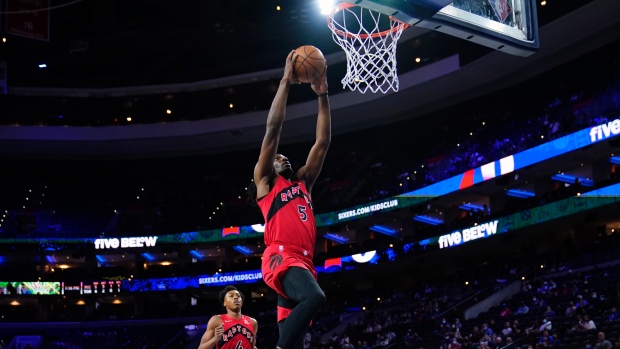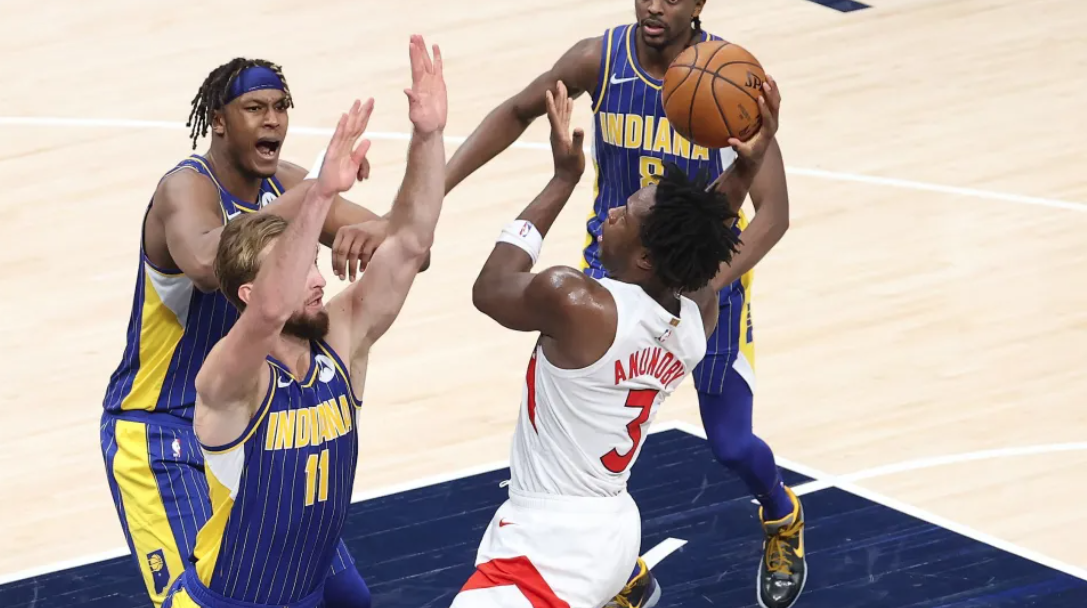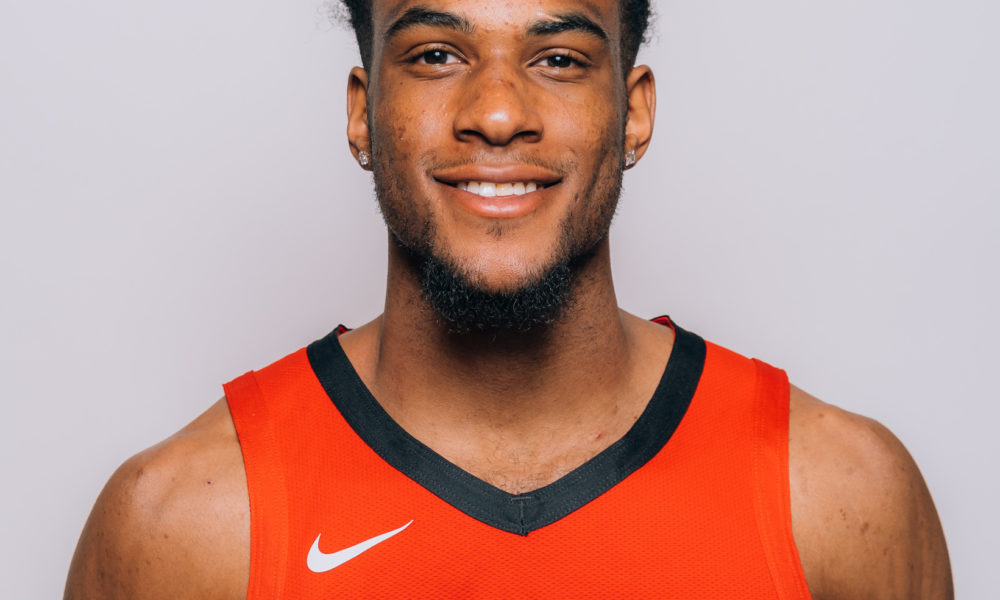Alleyoops are increasingly a staple of NBA offenses. As teams run more and more pick and rolls — with more and more spacing — defenses are stretched further and further across the full expanse of the court. And very often one defender has to guard both a shooter in the corner and tag the roller to prevent a lob for a dunk. It’s a hard job, and it’s part of the reason why alongside the three-point revolution, dunks as a percentage of field goals have been increasing steadily over the last several years, from 4.7 percent in 2014-15 to 5.7 percent so far this season.
Lobs are also, conveniently, one of the most efficient source of scoring in the NBA. Even a player with modest vertical athleticism, like say Khem Birch, shot six for eight on lobs last year. Lobs are extremely high-efficiency shots. They’re also a critical component of offense, and for the best lob players in the league, they are not only automatic but also a high enough frequency look that they open the rest of the offense. Last year, John Collins, a six-foot-nine forward with springs for legs, shot 80 percent on lobs while attempting nearly one a game. It is no coincidence that the Atlanta Hawks also sported a top-10 halfcourt offense. Toronto’s starting center, Precious Achiuwa, has a similar body type to Collins, but he doesn’t yet offer the same impact as Collins does for Atlanta.
Part of that is because Achiuwa is shooting only three for nine on lobs this season. That 33.3 percent from the field on lobs represents a miserable 0.66 points per possession, worse even than Toronto’s 27th-in-the-league halfcourt offensive output that manages 0.81 points per play. Lobs are supposed to be free points — far, far above the expected efficiency of an average possession. Yet for the already offensively challenged Raptors, lobs to Achiuwa have been even more of a struggle to convert than the average shot in the halfcourt.
Why?
Part of the reason why the Raptors have been so woefully unsuccessful with lobs is because they’ve been so unsuccessful on triples from the corner; the two are symbiotic, and accuracy in one leads to frequency in the other, and vice versa. And the Raptors are currently shooting 26.7 percent on corner threes, meaning defenders can tag Toronto’s rollers with impunity, fairly confident in Toronto’s inability to hurt them for that choice.
Because of Toronto’s difficulties in hitting from the corner, defenders are able to tag Achiuwa with multiple bodies. He’s multiple times found himself surrounded by bodies in the paint, at which times he has to levitate over a crowd to have any chance of finishing. VanVleet should not be throwing those passes to begin with — particularly when Scottie Barnes was setting a screen for an open OG Anunoby on the weakside.
In fact, mistiming lob passes has been something of a trend for VanVleet. He’s never been much of a lob thrower in the past — partially because he hasn’t spent much time with lob finishers, if any at all — and learning the art has been a transition for him. He has certainly improved over four games at throwing accurate lob passes, but his offensive profile also limits the availability of the pass to him. Defenders can give him a beat of extra space and still track his shot, which means they can stick with the roller for longer, and VanVleet has less of a window to throw passes than would bigger or more athletic guards. His need to force passes into tighter windows can mean he throws passes, even when there’s an opening, too high or with too much heat.
At times, VanVleet has simply biffed it and thrown passes well off the mark.
That isn’t to say that all the fault lies in Achiuwa’s passing partner. VanVleet has dealt plenty of aces that Achiuwa has decided to fold. He may be a freakish vertical athlete, but his coordination at times leaves something to be desired; he has poor hands in midair, which means if he has to stretch to reach the ball, he isn’t reliable at actually catching and finishing.
That lack of coordination can mean when Achiuwa is tagged, even if there’s no real contest in midair, he has trouble catching the ball. Taggers can hit him on the ground to crowd his jumping space, and that can impact his ability to finish up high. It’s not difficult to ensure he doesn’t get a great jump, either, as he appears to much prefer two-footed jumps to any other variety.
Or, taggers can just meet him above the rim. This is a ridiculous play, but it’s indicative that Achiuwa can be met in the air by a wing coming from behind. The best lob finishers get higher than Achiuwa does here, and if you don’t meet them on the ground, then you don’t meet them at all. Achiuwa can be met on the ground or in midair.
That’s not to say the lob has never worked between VanVleet and Achiuwa. There have been plenty of success stories, too.
Note that in the halfcourt pick-and-roll successes above, there were some similarities; the would-be tagger didn’t have the chutzpa to leave the shooter (Scottie Barnes, both times, lol) in the corner. Similarly, in both scenarios, Achiuwa set strong screens that put the guard defender on VanVleet’s back, leaving the center defender alone to cover two. Achiuwa needs to commit to more physical screens or more dedicated slips, as those qualities of decisiveness will go a long, long way towards opening more lobs.
Still, Achiuwa and VanVleet connecting three times in four games is actually a fairly impressive feat! Lobs between two players are actually fairly rare; as previously established, dunks comprise 5.7 percent of field goal attempts, which mean that they add up to approximately five attempts a game, given the average of 90.7 field goal attempts per game. Lobs would form only a portion of that. So two players combining even a small handful of times on lob dunks in a few games is an objectively good thing.
That they’ve failed to connect on so many other attempts can be seen as a two-sided coin. On one hand, it’s impressive that they’ve even had the opportunity for so many attempts. Of course, it’s obviously an issue to have missed so many attempts. But to convert more of them wouldn’t take too many tweaks. If VanVleet threw his passes to the correct place — and stopped forcing them when his window is too tight or Achiuwa is in a crowd — that would already be worth a few extra points for the Raptors. On the other end of the connection, a player’s hands are hard to improve, but Serge Ibaka improved his hands dramatically during his time in Toronto, so the Raptors clearly have the drills in place to improve Achiuwa’s in-air coordination. Once the Raptors start making their corner threes, that will on its own go a long way towards opening up the lob.
Outside of those individual and contextual improvements, there are elements that can’t be improved. VanVleet can’t grow, and it looks at this point like defenders are and will remain comfortable letting him attack the rim without rotating. Achiuwa likewise can’t grow, and he probably won’t become a better jumper after a tag. Unless something dramatic changes, those limitations mean the Raptors’ twosome likely won’t become league leaders in the lob play; Trae Young and Collins (or Clint Capela) can rest easy with their title in that area.
But the Raptors can become more efficient with the lob. And until they do, the halfcourt offense isn’t likely to climb out of its doldrums. As was a problem las season, Toronto needs to find ways to pressure the rim. Until Pascal Siakam returns, the Raptors won’t have any player who can consistently reach the rim, force rotations in doing so, and finish once he’s there. The lob is a convenient workaround to create excellent at-rim attempts, and it’s telling that Toronto is attempting the play so frequently, even though its not working. The idea is sound. But the execution needs to improve.



